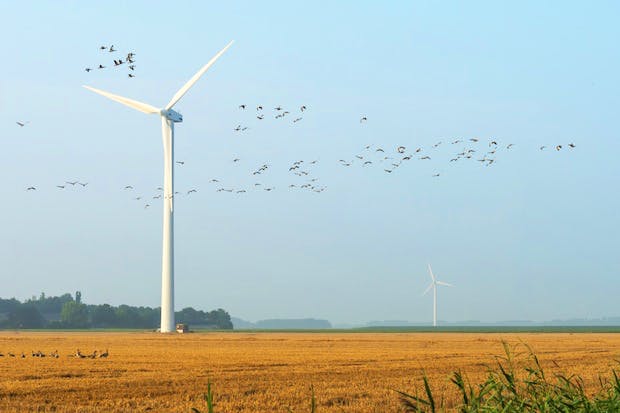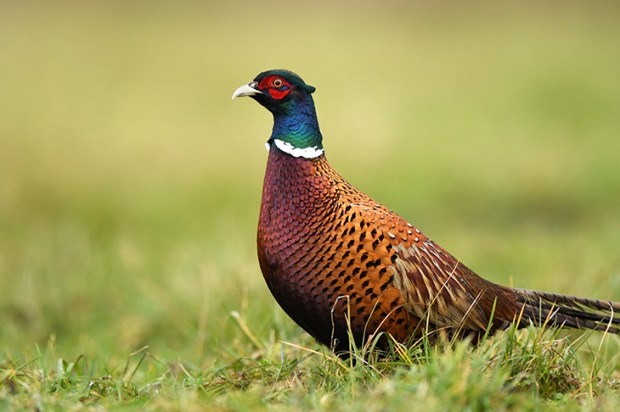The RSPB has come out against fracking and urged the government to ‘rethink its shale gas policies’. And of course the Royal Society for the Protection of Birds would know. After all when your skill set ranges from identifying Little Brown Jobs through your binoculars at 10,000 yards all the way to differentiating a Greater Spotted Woodpecker from a Lesser Spotted Woodpecker merely by the sound of its drumming beak, clearly it goes without saying that your insights into the merits of hydraulic fracturing and the minutiae of Britain’s energy economy deserve to be taken very seriously indeed.
No, no I jest. About the first bit, anyway. It would, of course, be an utter nonsense to expect anyone in the upper echelons of the RSPB (as opposed to the dedicated and decent membership) to know anything about ornithology these days. What, after all, do stupid, twittery, feathered creatures matter when you’re on a holy, Gaia-sent mission to drive up the cost of energy, rein in economic growth, and rid the world of all those pesky raptors which insist on hovering dangerously next to the splendid spinning turbine blades which are going to save us from global warming?
Lest you think I exaggerate, consider the RSPB’s latest flight of lunacy. It is currently applying for planning permission to adorn its nature reserve HQ in Sandy, Bedfordshire, with a 100-metre wind turbine. The RSPB claims ‘it is the single biggest step we can take to reduce our carbon emissions’. Yes, but what about the woodpecker, the great tit, the hobby, and the nuthatch, which the RSPB lists as the reserve’s star attractions: where exactly do they fit into this exciting new plan?
According to the Spanish conservation charity SEO/Birdlife, a typical wind turbine kills between 110 and 330 birds per year. Other research from Sweden puts the mortality rate as high as 895. But let’s give the RSPB the benefit of the doubt and put it at the lower end of the scale. That still means two birds totalled by the RSPB every week. These will nicely complement the average four birds a week killed by the two turbines on the RSPB’s other reserves. Not to mention the many hundreds more sliced and diced by turbines belonging to the RSPB’s current favoured renewable energy partner, Dale Vince of Ecotricity. And the hundreds more chopped and mashed by the RSPB’s previous business partner, Scottish and Southern Electricity (SSE) — including, last year, at least two rare hen harriers.
These partnerships are a lucrative business for the RSPB. Over a period of ten years, it admits to having made around a million pounds from its association with SSE. No doubt it hopes to achieve similar success with its current arrangement, whereby the RSPB will receive £60 for every member who signs up for a dual-fuel account with Ecotricity, and another £40 when members open an account with Triodos bank, which finances many renewable industry projects including wind.
Again, though: what about the birds? When I spoke to the RSPB’s conservation director Martin Harper, he said: ‘We are a conservation body and our belief is that climate change is the biggest threat facing wildlife today.’ I asked him what evidence he had for a claim which has looked increasingly out-of-touch since ‘global warming’ began its long pause in 1997. Harper referred me to a 2004 study, published in Nature, which said that 15 to 37 per cent of species were ‘committed to extinction’ by 2050 unless immediate action were taken to tackle climate change. (To give you an idea how utterly implausible this scenario is, consider this: in the last 500 years the total number of mammal species that have gone extinct is 61 and the total number of bird species is 129.)
So when, exactly, did the RSPB transform itself from Britain’s foremost — and much loved — ornithological charity into yet another left-leaning environmentalist advocacy group? The rot seems to have set in under Sir Graham Wynne (chief executive 1998-2010, now a trustee of the Green Alliance) and its former conservation director (2008 to 2013) Mark Avery, a Labour party member and pro-wind farm campaigner. Since then, the RSPB appears to have been infiltrated by more militant entryists than Derek-Hatton-era Liverpool City Council.
More than a third of its members have links to the green movement, led by a president, the former Springwatch -presenter Kate Humble, who’s a big fan of wind energy, a chief executive, Mike Clarke, who campaigns for ‘the integration of the environment and the economy’ and a chairman, Steve Ormerod, who is a professor of ecology specialising in the effects of climate change on freshwater ecosystems.
What’s wrong with being ‘green’? Absolutely nothing, if it meant what most of the RSPB’s million-plus members probably think it means — preserving the natural landscape, caring for wildlife, stopping birds and bats being liquidised by giant Magimixes on stilts, that kind of thing. If only…
Got something to add? Join the discussion and comment below.
Get 10 issues for just $10
Subscribe to The Spectator Australia today for the next 10 magazine issues, plus full online access, for just $10.















Comments
Don't miss out
Join the conversation with other Spectator Australia readers. Subscribe to leave a comment.
SUBSCRIBEAlready a subscriber? Log in